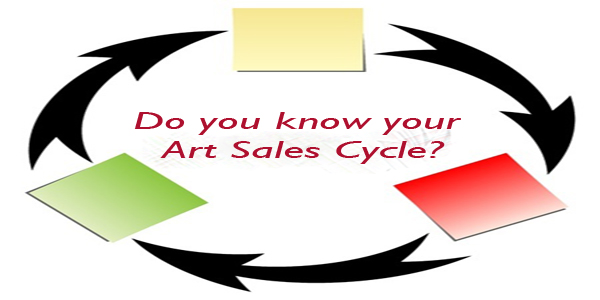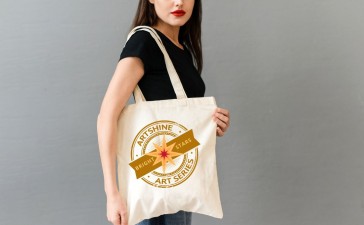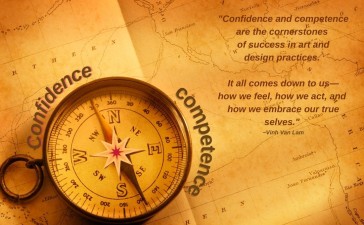You’ve probably seen them – paintings and other works of art listed online that are $ 9,000 or more. And right next to the artworks, a “Buy” button. You may have thought: “Does anyone actually ever place those expensive things into a shopping cart and buy them online?”
Not very likely. Although I am in favour of artists listing their prices online, I know these items and their availability don’t translate into “click and buy.” The only one way people would buy them online is that they had visited the gallery, had seen the artworks in the past and decided to buy it online. This is a rare case I have to admit but it did happen to some of my clients.
Why do you think artists or gallery owners list the art prices even though their art are expensive online?
This is because their high prices are usually just the beginning of the conversation. This is the start of the “sales cycle” where potential buyers will be identified, qualified, and where the artist will enter into communications with the customer to move the sale along.
Letting the public know your price means they can either select out of your pool of prospective buyers or they will have key information that your price is affordable for them, and that will help move them on to the next stage.
Some sales cycles are short. Your exhibition at an art or craft fair, and a customer comes into your stand. They see something they like, say a handmade bangle. They love it, try it on, and buy it. Is your part over after you wrap up their purchase? No – because you will be getting their contact information so that you can stay in touch and make other sales to them in the future.
Some sales cycles are longer. If you are a sculptor and you are seeking to create large outdoor installations at college or for public garden, you have a very different cycle, one that most likely starts with research, finding the very few prospects that are looking to commission this type of work. Presentations and negotiations can be protracted, and you must have patience. However, if that is your type of art business, you will well understand how to go about finding and attracting prospective customers, and what you need to do every step along the way to move the sales cycle forward to the “close.” Some artists would use a gallery or an art agent to do the work and find commission work for them so they can concentrate on their art and left the sales to the experts.
Some industries have longer sales cycles because you need to become known, seen and remembered. These customers need to become comfortable that you have established a business that isn’t going to disappear as they will develop an enduring working relationship with you.
Artists who license their artworks usually have a long cycle since manufacturers will be signing contracts with them that last for a few years. Likewise, wholesale buyers often need to see the artist and their work several times before considering a purchase for their store or gallery.
Your different collections or product lines may have different sales cycles. Reproductions or prints, lower-end or production work might sell more quickly and have a different customer base than your higher-priced, original or one-of-a-kind work.
And you may have to sell them in very different ways. This means you need to understand the different sales cycles for your art, and you have to create systems to move prospective customers through those cycles.
Most potential sales fall through. Ultimately it is a numbers game because lots of people need to see your art before a sale is made. It’s up to you to choose those venues (whether in person or online) which attract the most ideal customer for your work so that your art can be seen and you can start to get nibbles that turn into opportunities and then into sales.
So you need to understand your process and your timeline. The best way to lose sales is to ignore your cycle and fail to step up and contact your customers at the right time to close the sale.
This happens all the time. Artists who don’t feel comfortable sending an email or making a call – and who don’t follow up with people who could become collectors of their work – leave money on the table and drive away customers they aim to cultivate.
Don’t walk away from these opportunities once they appear. Create a solid and workable plan to move those prospects into a new category – called “ideal clients.”
Become sharply aware of the cues that your prospects give that they need communication from you, answers to their questions, or that you need to work to overcome any fears and objections they may have.
Follow up regularly. Focus on great customer service. Offer lots of information so that the customer has a comfort level with buying your work. Be accessible and be responsive.
However, If you are the kind of artists who prefer to use an art agent or a gallery to sell your artworks. Make sure you find an agent or a gallery who understand you and your art and are committed to promote you and they are able to generate regular sales for you.





